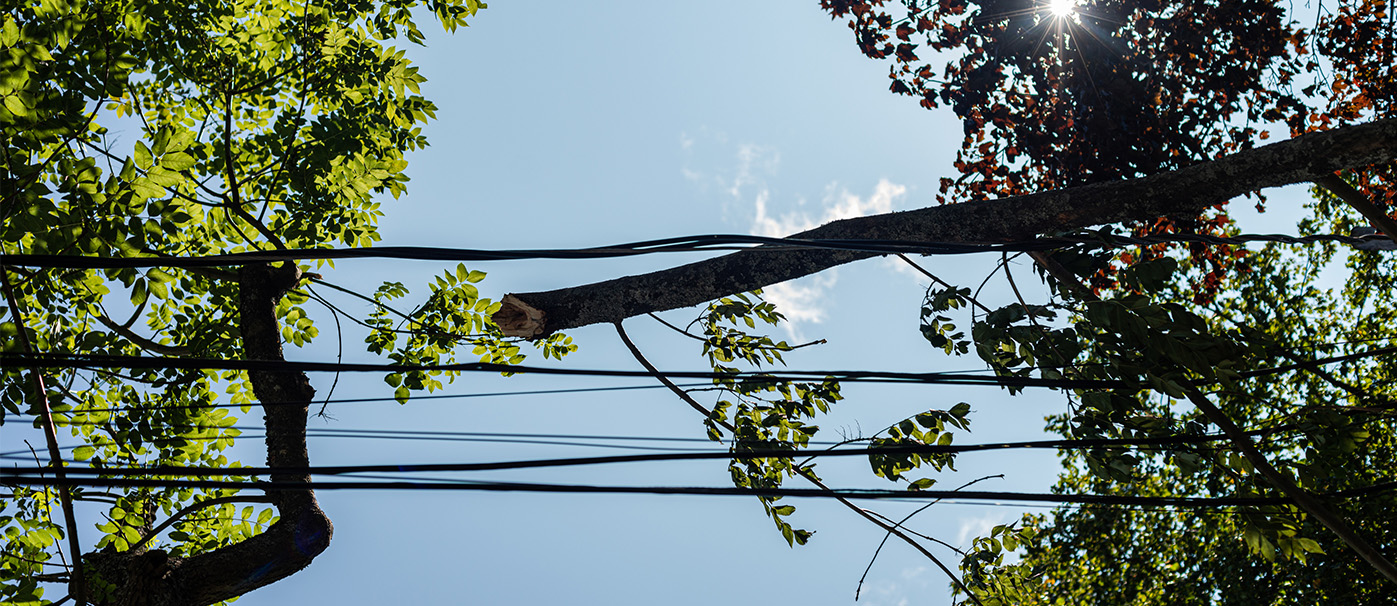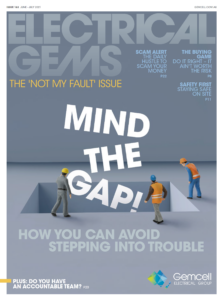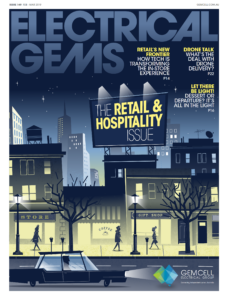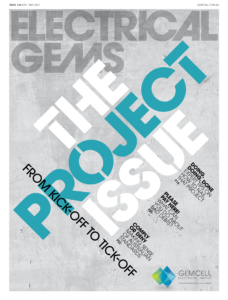Out Now
The Aussie Issue
Current Issue
The Aussie Issue
DEC 25 - JAN 26

The role of the electrical contractor is often part electrician, part super-sleuth. And while some problems are elementary, others take longer to solve.
Electrical systems are complicated things, and there are plenty of things that can go wrong. Whether it’s rusting causing an open-circuit fault, a blown fuse resulting in a short-circuit fault, or a damaged connection leading to an earth fault, there’s no shortage of places to look for blame.
Of course, the end user doesn’t generally understand the reason for what’s amiss – all they notice are the symptoms. And, just like an overworked GP on a tele consult, it’s up to the jobbing sparky to diagnose the problem and cure it ASAP.
Equipment failure is a fact of life – if it weren’t, there’d be a lot less work to go around! It can be down to a gazillion (approximately) things, including loose connections or parts, inadequate insulation, overloading or inadequate power capacity, accumulation of dust and dirt, overheating, and much, much more.
Moisture is estimated to account for about 17 per cent of all electrical failures. And that’s a big problem if you live in the tropics, where humidity and heavy rainfall take their toll.
Brad Sims is Director of BH Electrics. He’s based in Port Douglas, Far North Queensland, where 800mm of rain has been known to fall in a single day.
“In summer, the proportion of fault work that’s down to moisture and rainfall is about 50 per cent,” he says. “Typical problems are power and lighting faults tripping circuits, and exterior lighting circuits tripping. Often a telltale sign will be small rust marks running out of fittings or inside the diffuser. But it isn’t always obvious that water has caused the fault, because sometimes it will dry out before – or even while – you’re testing the circuit. Then comes the next big downpour.”
Jim’s neighbour is pretty handy with the electrics, so Jim thinks he can save a few bucks by asking him to wire up the new security light on his front porch. We’ve all met Jim, right? Most electricians have a tale about electrical faults that can be attributed to previous work by A. Random.
Personal safety aside, Jim is breaking the law, and any insurance policies he has likely won’t be worth the paper they’re printed on when something goes wrong. In short, unlicensed electrical work is not worth the risk – but people still do it, and it’s usually left to the experts to clean up the mess.
Domenic Schifino is an electrical contractor at CIDE in NSW. He reckons in his 30 years as an electrician, he has come across substandard or downright shonky installation work almost daily.
“In Sydney there are a lot of old terraces, built between 1820 and 1940, and the old cabling is still there,” he says. “There are steel conduits, and light fittings aren’t earthed. You get DIYers and new contractors who go in, replace the lights with the old cabling and walk away.”
So why do people take the risk?
“Some of it is down to cost-cutting, but it’s also just laziness,” says Schifino. “I think for a lot of employees, the care factor isn’t there. They just want to get it done, get paid and go home.”
The weather has a lot to answer for. From trees falling on homes to major state-wide blackouts, thunderstorms, cyclones, bushfires and blizzards are all common culprits for major electrical faults.
And there’s another natural factor at play that causes thousands of power outages each year: our furry friends. Between rats, birds and possums, millions of dollars in damage is done. If a mouse chews on a cable, there will be problems in the kitchen. If it finds its way into a transformer or substation, the damage can be substantial. And, often, the first sign an electrical worker gets that an animal was the cause of an outage is the corpse it leaves behind.
“Wild creatures often make their way into areas that should be off limits, perhaps intrigued by the humming of electrical units, or seeking warmth on a chilly day, and it rarely ends well,” says Kylie Parnham, National Senior Manager Consumer Power Australia NZ, at Gemcell Approved Supplier, Generac.
“Birds can also contribute to animal-related power outages. Waste from their nests can cause build-up on the powerlines or insulators. Shortages caused by a bird as it takes flight can cause outages as well.”
Keep up to date with our latest news and competitions by subscribing to our regular newsletter.

Issue 189
OCT - NOV 2025

Issue 188
AUG - SEPT 2025

Issue 187
JUN - JUL 2025

Issue 186
APR - MAY 2025

Issue 185
FEB - MAR 2025

Issue 184
DEC 2024 - JAN 2025

Issue 183
OCT - NOV 2024

Issue 182
AUG - SEPT 2024

Issue 181
JUN - JUL 2024

Issue 180
APR - MAY 2024

Issue 179
FEB - MARCH 2024

Issue 178
DEC 2023 - JAN 2024

Issue 177
OCT - NOV 2023

Issue 176
AUG - SEPT 2023

Issue 175
JUN - JUL 2023

Issue 174
APR - MAY 2023

Issue 173
FEB - MAR 2023

Issue 172
DEC 2022 - JAN 2023

Issue 171
OCT - NOV 2022

Issue 170
AUG - SEPT 2022

Issue 169
JUN - JUL 2022

Issue 168
APR - MAY 2022

Issue 167
FEB - MAR 2022

Issue 166
DEC 2021 - JAN 2022

Issue 165
OCT - NOV 2021

Issue 164
AUG - SEPT 2021

Issue 163
JUN - JUL 2021

Issue 162
APR - MAY 2021

Issue 161
FEB - MAR 2021

Issue 160
DEC 2020 - JAN 2021

Issue 159
OCT - NOV 2020

Issue 158
AUG - SEPT 2020

Issue 157
JUN - JUL 2022

Issue 156
APR - MAY 2020

Issue 155
FEB - MAR 2020

Issue 154
DEC 2019 - JAN 2020

Issue 153
OCT - NOV 2019

Issue 152
AUG - SEPT 2019

Issue 151
JUN - JUL 2019

Issue 150
APR - MAY 2019

Issue 149
FEB - MAR 2019

Issue 148
DEC 2018 - JAN 2019

Issue 147
OCT - NOV 2018

Issue 146
AUG - SEPT 2018

Issue 145
JUN - JUL 2018

Issue 144
APR - MAY 2018

Issue 143
FEB - MAR 2018

Issue 142
DEC 2016 - JAN 2017

Issue 141
OCT- NOV 2017

Issue 140
AUG - SEPT 2017

Issue 139
JUN - JUL 2017

Issue 138
APR - MAY 2017

Issue 137
FEB - MAR 2017

Issue 136
DEC 2016 - JAN 2017

Issue 135
OCT - NOV 2017

Issue 134
AUG - SEPT 2016

Issue 133
JUN - JUL 2016

Issue 132
APR - MAY 2016

Issue 131
FEB - MAR 2016

Issue 130
DEC 2015 - JAN 2016

Issue 129
OCT - NOV 2015

Issue 128
AUG - SEPT 2015

Issue 127
JUN - JUL 2015

Issue 125
APR - MAY 2015

Issue 125
FEB - MAR 2015

Issue 124
DEC 2014 - JAN 2015

Issue 123
OCT - NOV 2014

Issue 122
AUG - SEPT 2014

Issue 121
JUN - JUL 2014

Issue 120
APR - MAY 2014

Issue 119
FEB - MAR 2014

Issue 118
DEC 2013 - JAN 2014

Issue 117
OCT - NOV 2013

Issue 116
AUG - SEPT 2013

Comments (0)
Write a Comment